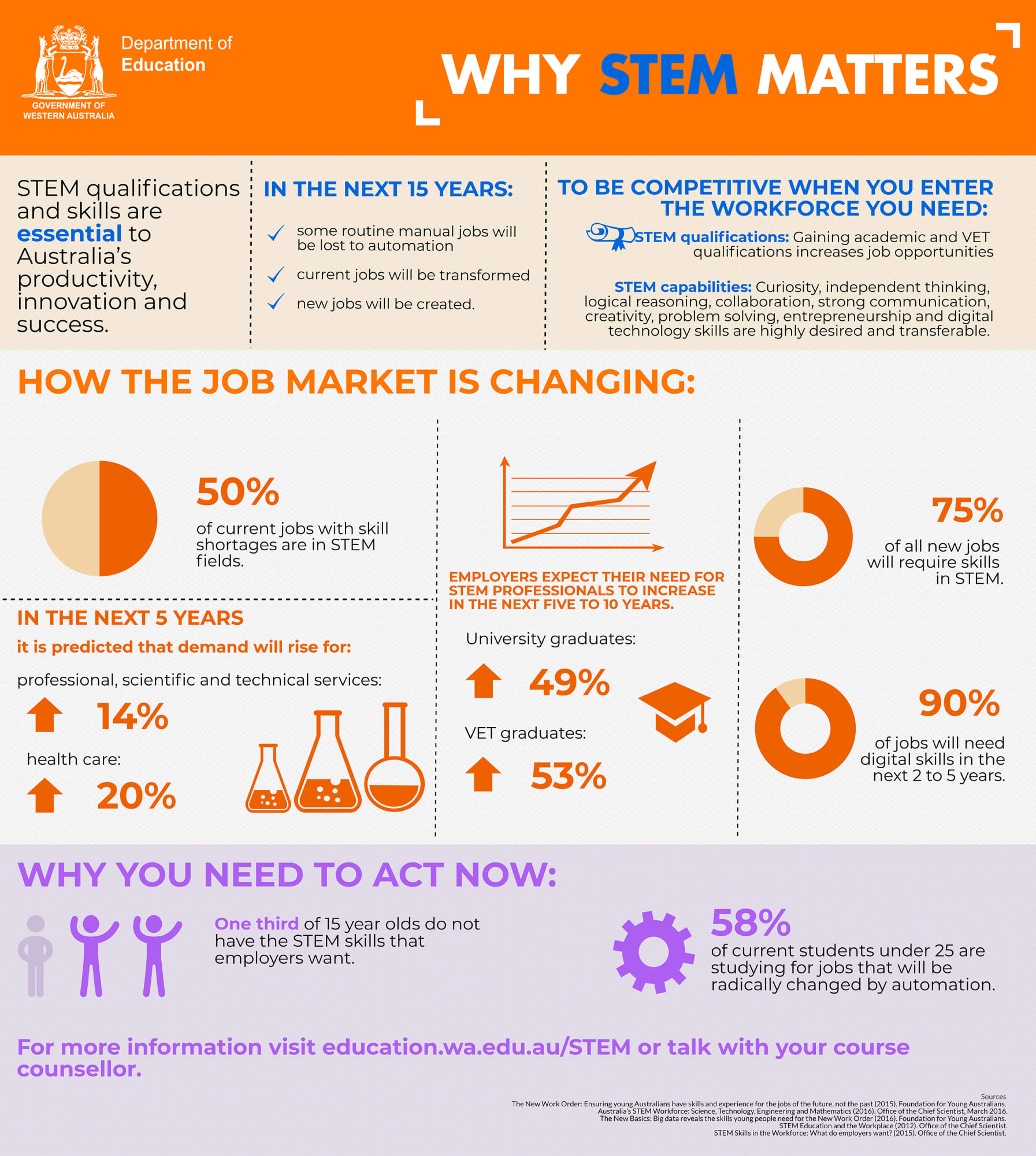STEM in the WA Curriculum
STEM in the WA Curriculum
The Western Australian Curriculum and Assessment Outline sets out the curriculum for children from Kindergarten to Year 10. STEM knowledge and skills are embedded across these subject disciplines.
In Years 11 and 12, young people work towards gaining their Western Australian Certificate of Education (WACE), choosing either an academic or vocational pathway.
There are a range of STEM related courses that children can access.
The S in STEM
Children from Pre-primary to Year 10 are required to study science.
The T in STEM
Technologies is a compulsory part of the Western Australian Curriculum. It includes two subjects that all children from Pre-primary to Year 8 must learn:
- design and technologies
- digital technologies.
The design and technologies subject allows students to study as least one of the following:
- engineering principles and systems
- food and fibre production
- food specialisations
- materials and technologies specialisations.
Technologies is optional for study in Years 9 and 10.
The E in STEM
Engineering principles can be integrated into science, technologies and mathematics learning programs.
Schools may also offer engineering as an elective subject in Years 7 to 10.
There are a number of pathways available to young people in Years 11 and 12 interested in studying engineering as part of their WACE.
The M in STEM
Children from Pre-primary to Year 10 are required to study mathematics.
You may also be interested in
Back What is STEM?
STEM is an approach to learning and development that integrates the areas of science, technology, engineering and mathematics.
Through STEM, students develop key skills including:
- problem solving
- creativity
- critical analysis
- teamwork
- independent thinking
- initiative
- communication
- digital literacy.
Why is STEM important?
The global economy is changing. Current jobs are disappearing due to automation and new jobs are emerging every day as a result of technological advances.
The continual advances in technology are changing the way students learn, connect and interact every day. Skills developed by students through STEM provide them with the foundation to succeed at school and beyond.
Employer demand for STEM qualifications and skills is high, and will continue to increase in the future. Currently, 75 per cent of jobs in the fastest growing industries require workers with STEM skills. To be competitive, the Australian workforce needs people who can adapt to a changing workplace.
STEM empowers individuals with the skills to succeed and adapt to this changing world.
